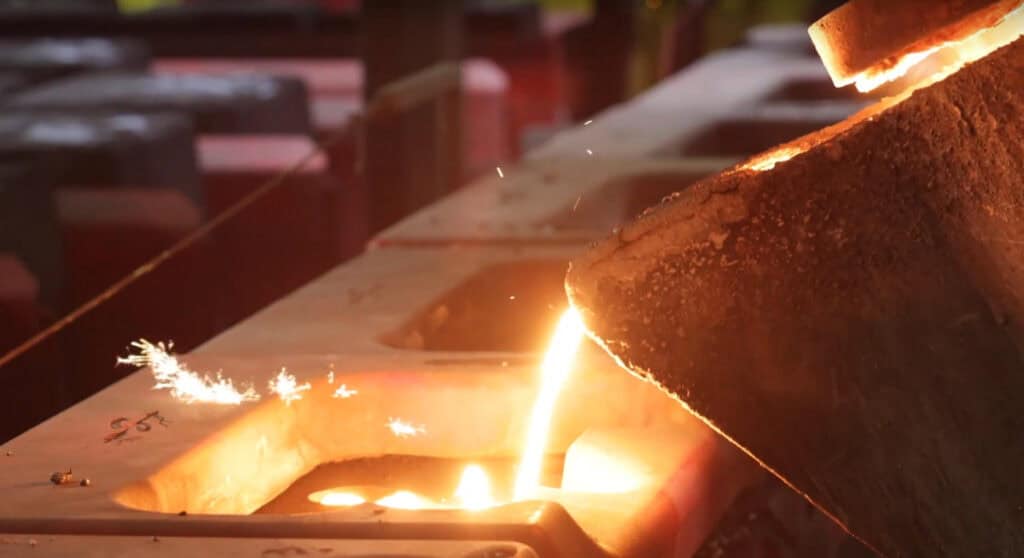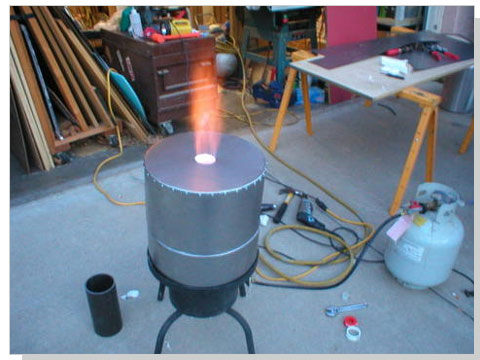Discover the Innovative Methods Used in a Metal Foundry for Superior Casting Results
In today's affordable manufacturing landscape, metal foundries are progressively taking on innovative techniques to enhance spreading results - Aluminum Foundry. Advanced computer simulations enable accurate modeling of molten metal habits, while 3D printing allows fast manufacturing of intricate mold and mildews. Furthermore, environment-friendly products and automation simplify procedures. These developments guarantee substantial improvements in efficiency and quality assurance. Nonetheless, the effect of these modern technologies on sustainability and manufacturing practices remains to be totally checked out
Advanced Computer System Simulations in Metal Casting
Advanced computer system simulations have changed the metal spreading process by improving accuracy and efficiency. These advanced tools allow engineers to develop virtual versions of actors components, allowing them to evaluate and forecast the actions of liquified metal throughout the spreading phase. By mimicing numerous criteria such as temperature, circulation rate, and air conditioning rates, makers can recognize potential issues before physical manufacturing starts.
This proactive method minimizes waste and decreases costly mistakes, eventually causing boosted item high quality. In addition, simulations help with the optimization of mold and mildew styles, guaranteeing that they fulfill the specific needs of each project. The assimilation of computational fluid dynamics (CFD) and limited aspect evaluation (FEA) further contributes to the precision of these simulations, providing insights that were formerly unattainable. Consequently, advanced computer system simulations have come to be an essential part of modern metal foundries, considerably progressing the market's abilities.
3D Printing for Mold And Mildews and Patterns
3D printing has arised as a groundbreaking technique for developing molds and patterns in the metal foundry sector. This modern technology allows the quick production of complex geometries that typical manufacturing techniques have a hard time to attain. By using additive manufacturing, foundries can produce intricate styles with reduced preparations and material waste. The ability to create mold and mildews on demand permits higher adaptability in design versions, assisting in faster prototyping and modifications.
Additionally, 3D printing can utilize a selection of products, including plastics and steels, tailored to details casting demands. This versatility enhances the accuracy of molds, leading to remarkable spreading outcomes with boosted surface area coatings. Additionally, the decrease in the variety of parts required simplifies setting up procedures, additionally maximizing production effectiveness. As foundries proceed to embrace 3D printing, they are poised to redefine sector standards, leading the way for development and improved performance in metal spreading operations.
Eco-Friendly Materials and Processes
As the metal foundry sector encounters boosting pressure to decrease its environmental impact, the adoption of environmentally friendly materials and procedures has actually become crucial. Factories are currently exploring sustainable choices to typical products, such as utilizing recycled metals and bio-based binders. These materials not only reduce waste but likewise lower energy intake throughout production.
In addition, advancements in sand casting strategies have brought about the use of artificial sands that are less damaging to the environment. Shops are also implementing innovative processes like molten metal therapy that minimizes discharges and improves the high quality of cast items.
Furthermore, water-based finishes have actually changed toxic solvents, promoting a safer work environment (Aluminum Foundry). By incorporating these environmentally friendly techniques, metal foundries can noticeably lower their eco-friendly influence while maintaining top notch casting outcomes. This shift not just benefits the setting but likewise straightens with the growing consumer demand her comment is here for sustainable production remedies
Automation and Robotics in Foundry Operations
While the metal foundry sector embraces development, the integration of automation and robotics is changing operations greatly. Automated systems enhance procedures such as mold and mildew making, metal putting, and casting completing, considerably boosting performance. Robotics promote the handling of hefty products, decreasing the danger of workplace injuries and ensuring much safer atmospheres.

Further, the usage of automated assisted cars (AGVs) maximizes material transportation within centers, making sure timely delivery of elements to proper workstations. By applying these technologies, foundries can adjust to varying demands with greater dexterity, eventually leading to enhanced productivity and competition out there. As automation and robotics remain to advance, they hold the prospective to redefine traditional foundry practices and drive additional developments in casting techniques.
Real-Time Tracking and High Quality Control Techniques
The developments in automation and robotics have actually led the way for more sophisticated methods to quality control in metal foundries. Real-time monitoring systems make use of sophisticated sensors and data analytics to track critical parameters throughout the casting process. These systems constantly analyze variables such as material, temperature level, and stress make-up, making it possible for prompt detection of deviations from established standards.
Quality assurance methods now incorporate artificial intelligence algorithms that evaluate historic information to predict possible issues before they take place. This positive method decreases waste and improves general production efficiency. In addition, incorporated comments loops permit quick modifications, ensuring that each casting meets rigorous quality demands.
The implementation of digital twins-- virtual reproductions of physical properties-- has also revolutionized quality control, allowing designers to replicate and optimize processes in real-time. Together, these cutting-edge strategies greatly improve the integrity and high quality of castings, setting brand-new industry standards in metal foundry operations.
Regularly Asked Concerns
What Kinds of Metals Are Typically Cast in Shops?
Frequently cast metals in foundries consist of light weight aluminum, bronze, iron, and brass. Each metal displays one-of-a-kind properties, making them appropriate for various applications, such as vehicle components, equipment, and imaginative sculptures, improving their flexibility in production.

How much time Does the Casting Refine Commonly Take?
The casting procedure normally takes several hours to days, depending upon elements such as the intricacy of the mold, type of metal made use of, and air conditioning needs. Each phase affects the general period considerably.
What Safety and security Measures Are in Place for Foundry Employees?

Exactly how Are Defects in Castings Identified and Addressed?
Problems in castings are recognized via visual assessments and non-destructive testing methods. Once spotted, foundry workers resolve them by refining processes, readjusting material compositions, and executing rehabilitative measures to guarantee high quality and conformity with criteria.
What Is the Expense Variety for Metal Casting Solutions?
The expense array for metal spreading solutions usually ranges $1 to $10 per pound, relying on factors such as product type, complexity of the style, and manufacturing volume, affecting total rates significantly.
In today's competitive production landscape, metal foundries are significantly adopting ingenious strategies to enhance spreading outcomes. As the metal foundry sector faces enhancing pressure to decrease its ecological impact, the fostering of environment-friendly materials and procedures has come to be necessary. Foundries are currently discovering sustainable alternatives to traditional materials, such as utilizing recycled metals and bio-based binders. By integrating these eco-friendly methods, metal foundries can noticeably lower their environmental effect while preserving high-quality spreading outcomes. The improvements in automation and robotics have paved the way for more innovative approaches to top quality guarantee in metal foundries.